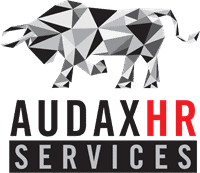The Occupational Safety and Health Administration (OSHA) issued worker safety guidance for coronavirus protection programs on Jan. 29, requiring greater input from employees and enhanced mask protections.
“Protecting Workers: Guidance on Mitigating and Preventing the Spread of COVID-19 in the Workplace” provides updated guidance and recommendations and outlines existing safety and health standards.
The guidance emphasizes employees’ role and rights, said Eric Hobbs, an attorney with Ogletree Deakins in Milwaukee. He noted that employees should be:
“The guidance even says that an effective COVID-19 prevention program should include an ‘anonymous process for workers to voice concerns about COVID-19-related hazards,’ ” Hobbs said.
Essential Prevention-Program Elements
Implementing a coronavirus protection program is the most effective way to reduce the spread of the virus, OSHA noted. The guidance recommends several essential elements in a prevention program:
The guidance details key measures for limiting coronavirus’ spread, including ensuring infected or potentially infected people are not in the workplace, implementing and following physical distancing protocols, and using surgical masks or cloth face coverings. It also provides guidance on use of personal protective equipment, improving ventilation, practicing good hygiene and cleaning routinely.
Mask Provisions
A stronger focus on face coverings is among the most notable differences between this guidance and prior guidance from OSHA and the Centers for Disease Control and Prevention (CDC), according to Todd Logsdon, an attorney with Fisher Phillips in Louisville, Ky.
“Employers should provide face coverings to the workers at no cost,” the guidance states. Employers also must discuss the possibility of reasonable accommodation for any workers who are unable to wear or have difficulty wearing face coverings due to a disability. In workplaces with employees who are hard of hearing, employers should consider acquiring masks with clear coverings over the mouth for all workers to facilitate lip-reading, the guidance adds.
“Require any other individuals at the workplace (e.g., visitors, customers, nonemployees) to wear a face covering unless they are under the age of 2 or are actively consuming food or beverages on site,” the guidance states.
For operations where the face covering worn by workers can become wet and soiled, employers should provide workers with replacements daily or more frequently, the guidance recommends. “Face shields may be provided for use with face coverings to protect them from getting wet and soiled, but they do not provide protection by themselves,” it adds.
The guidance from OSHA reiterates many of the same precautions employers have seen from the CDC and OSHA previously, including screening, enhanced sanitization of the workplace and social distancing, said Angelo Filippi with Kelley Kronenberg in Fort Lauderdale, Fla.
“What is significant about the new guidance are recommendations regarding hazard assessment, training of employees and recording of COVID-19 cases in the workplace,” he said. As part of a formal protection program, employers should identify potential hazardous conditions that create a risk of exposure.
“Hazards, policies and measures to eliminate hazards would then be communicated to employees as part of a training program,” he said. “Finally, OSHA advises that a COVID diagnosis that is work-related must be recorded for reporting purposes. If such infection results in hospitalization or a fatality, the employer must contact OSHA and report it within 24 hours of a hospitalization or eight hours of the fatality.”
General-Duty Clause May Apply
But in general, “OSHA is careful, throughout the guidance, to use the permissive ‘should,’ rather than to mandate anything,” Hobbs said.
The guidance states that it is advisory and informational and intended to assist employers in providing a safe and healthful workplace. “If OSHA were to cite employers for having failed to have written COVID-19 prevention programs that include all the elements recommended in the guidance, that clearly would be subregulatory action,” he said.
But the general-duty clause, as the guidance notes, requires employers to protect their employees from recognized hazards. And COVID-19 clearly is a recognized hazard. “So not addressing it in the workplace isn’t an employer’s option,” Hobbs added. “Where we on the employer side will most likely be at odds with OSHA is over what, exactly, an employer must do to address the hazard and to protect its employees adequately.”
Precursor to Emergency Temporary Standard
“The agency’s inevitable emergency temporary COVID-19 standard, I suspect, will include requirements a lot like those we see in the guidance,” Hobbs said. “And the emergency temporary standard will be enforceable without reference to other OSHA standards or the general-duty clause.”
Hobbs predicted that employers nonetheless “can expect a return to the Obama administration OSHA’s practice of using guidance to regulate. To what extent the practice will be deemed lawful in any particular case is the only question.”
Susan Harthill, an attorney with Morgan Lewis in Washington, D.C., said the guidance was a precursor to what employers can expect to be issued in emergency temporary standards, which President Joe Biden has instructed OSHA to consider issuing.
If any emergency temporary standard is necessary, it must be issued by March 15, she said. “It is possible OSHA will issue additional guidance as needed, but presumably the agency’s main focus will be the emergency temporary standard. OSHA can also enforce some of the guidance through existing standards and through the general-duty clause.”
This content was originally published here.



